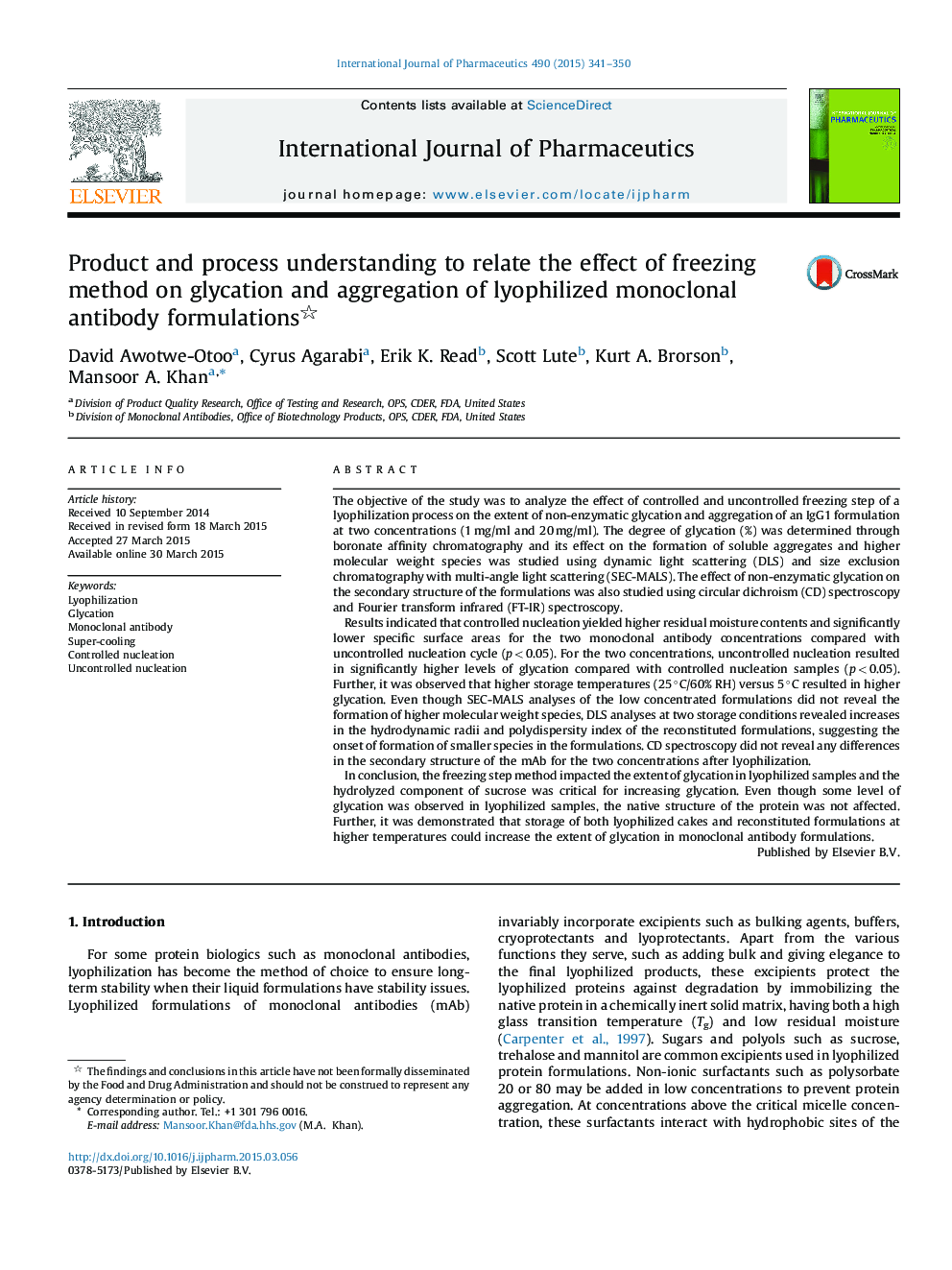| کد مقاله | کد نشریه | سال انتشار | مقاله انگلیسی | نسخه تمام متن |
|---|---|---|---|---|
| 2501318 | 1557334 | 2015 | 10 صفحه PDF | دانلود رایگان |
The objective of the study was to analyze the effect of controlled and uncontrolled freezing step of a lyophilization process on the extent of non-enzymatic glycation and aggregation of an IgG1 formulation at two concentrations (1 mg/ml and 20 mg/ml). The degree of glycation (%) was determined through boronate affinity chromatography and its effect on the formation of soluble aggregates and higher molecular weight species was studied using dynamic light scattering (DLS) and size exclusion chromatography with multi-angle light scattering (SEC-MALS). The effect of non-enzymatic glycation on the secondary structure of the formulations was also studied using circular dichroism (CD) spectroscopy and Fourier transform infrared (FT-IR) spectroscopy.Results indicated that controlled nucleation yielded higher residual moisture contents and significantly lower specific surface areas for the two monoclonal antibody concentrations compared with uncontrolled nucleation cycle (p < 0.05). For the two concentrations, uncontrolled nucleation resulted in significantly higher levels of glycation compared with controlled nucleation samples (p < 0.05). Further, it was observed that higher storage temperatures (25 °C/60% RH) versus 5 °C resulted in higher glycation. Even though SEC-MALS analyses of the low concentrated formulations did not reveal the formation of higher molecular weight species, DLS analyses at two storage conditions revealed increases in the hydrodynamic radii and polydispersity index of the reconstituted formulations, suggesting the onset of formation of smaller species in the formulations. CD spectroscopy did not reveal any differences in the secondary structure of the mAb for the two concentrations after lyophilization.In conclusion, the freezing step method impacted the extent of glycation in lyophilized samples and the hydrolyzed component of sucrose was critical for increasing glycation. Even though some level of glycation was observed in lyophilized samples, the native structure of the protein was not affected. Further, it was demonstrated that storage of both lyophilized cakes and reconstituted formulations at higher temperatures could increase the extent of glycation in monoclonal antibody formulations.
Figure optionsDownload high-quality image (133 K)Download as PowerPoint slide
Journal: International Journal of Pharmaceutics - Volume 490, Issues 1–2, 25 July 2015, Pages 341–350
